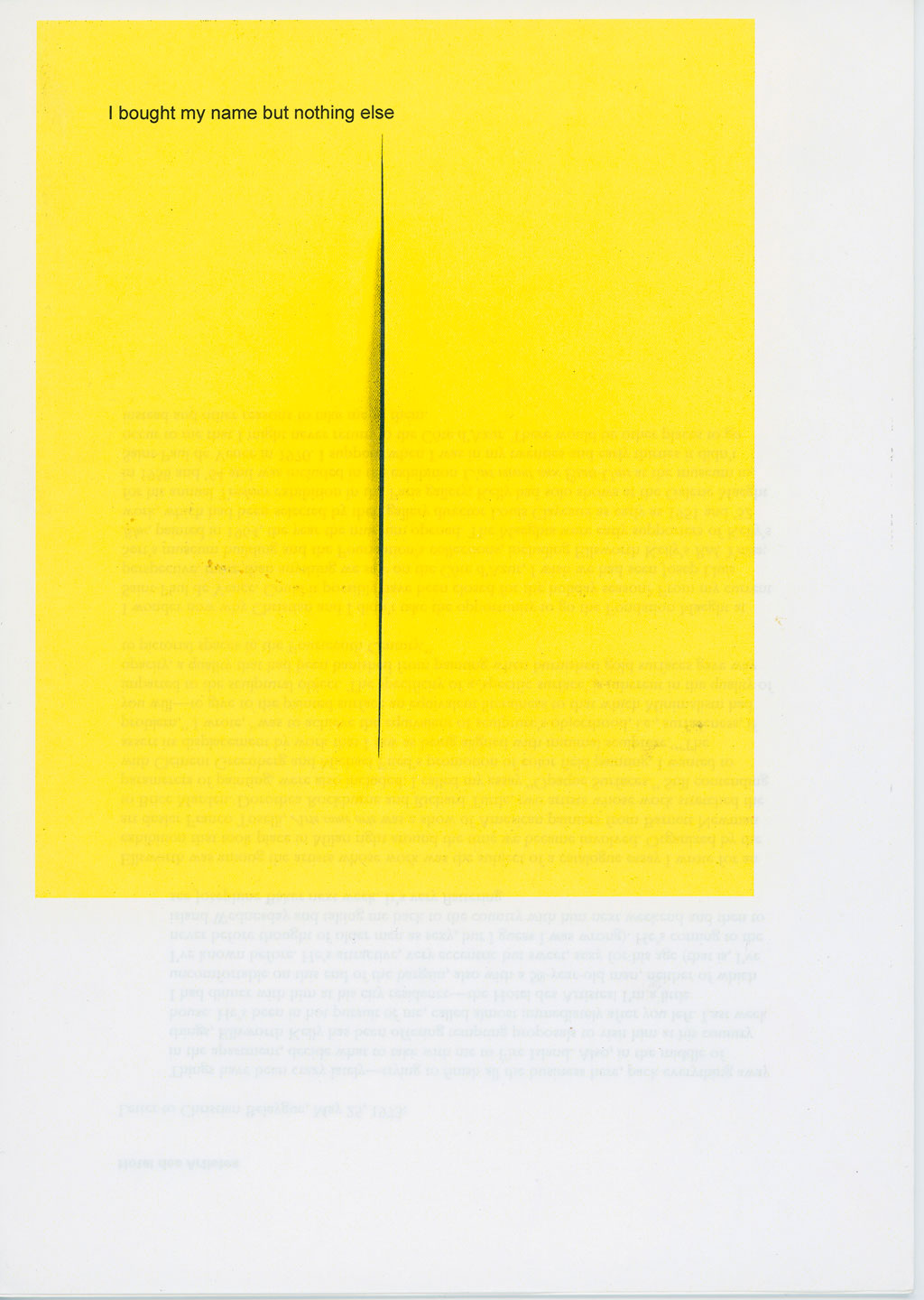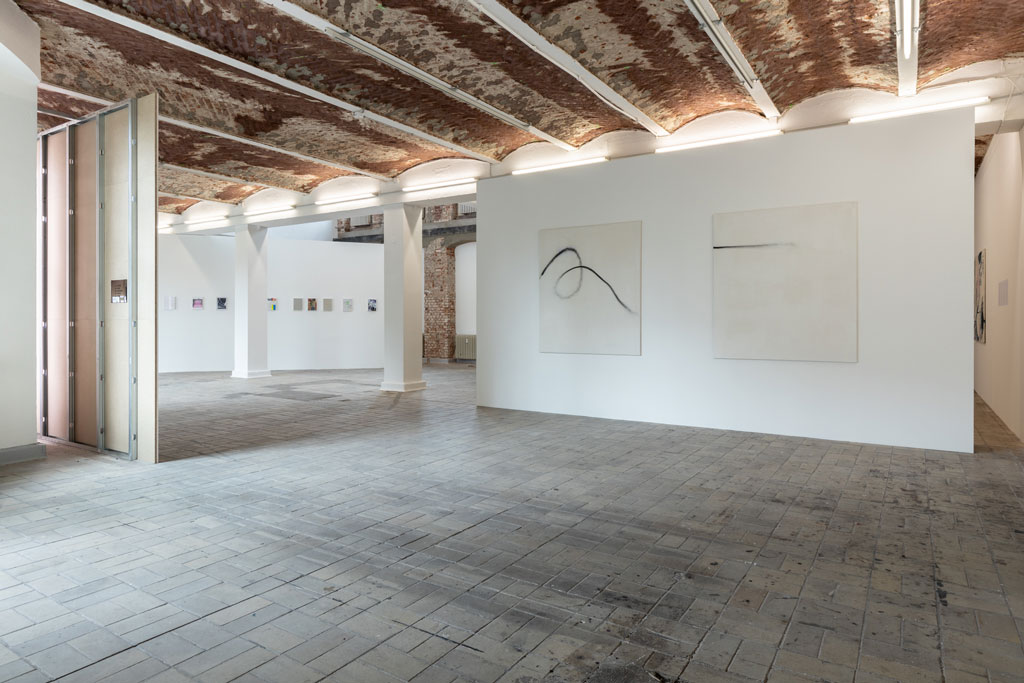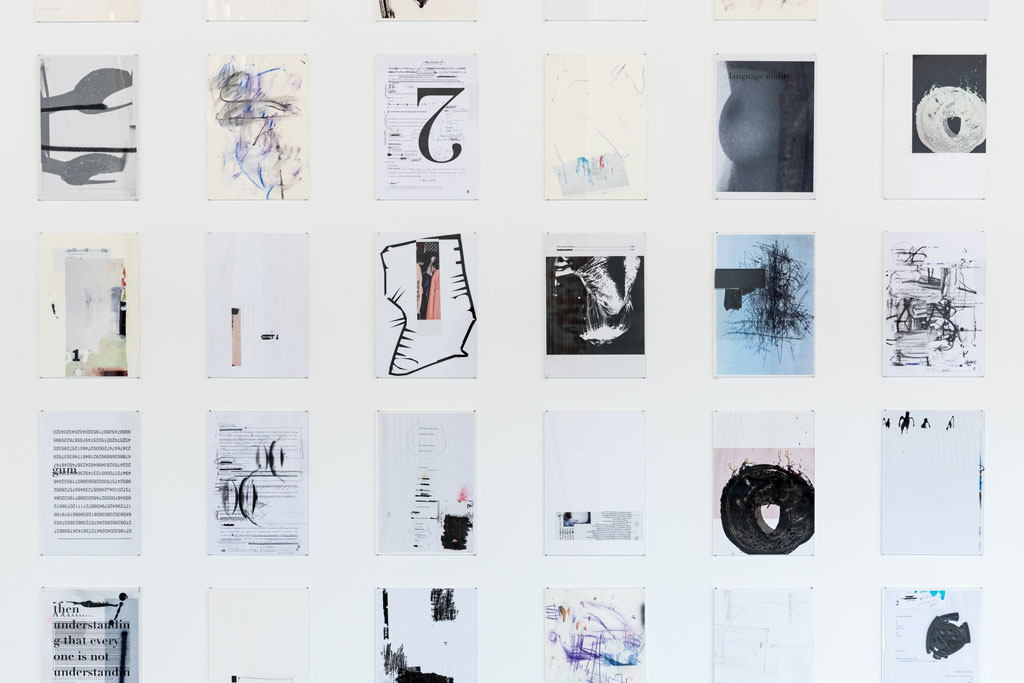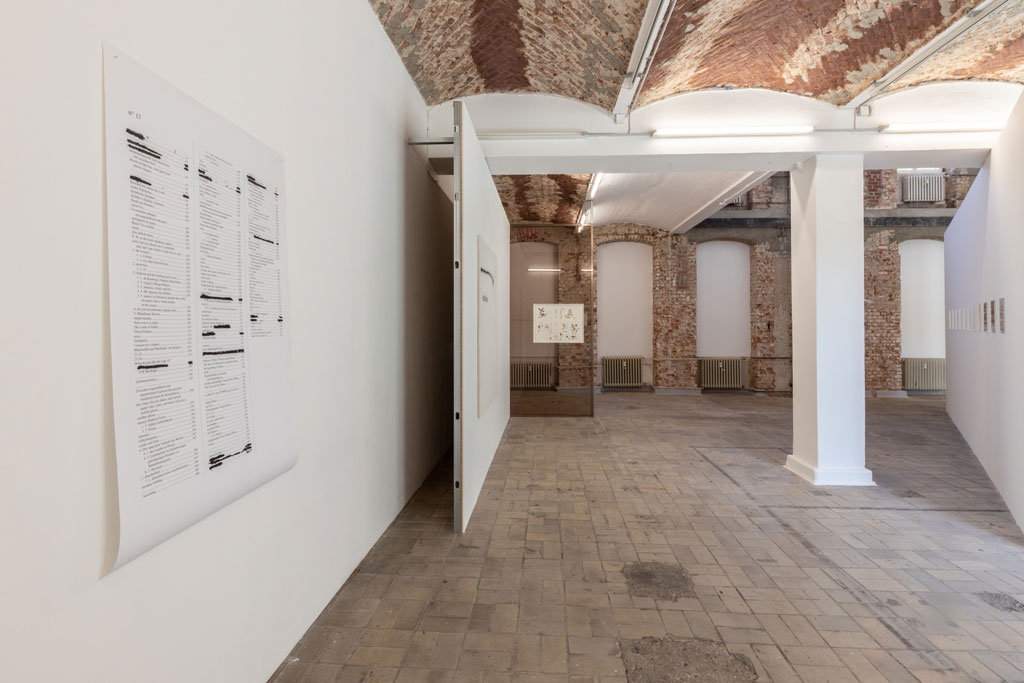ART CITIES:Berlin,Heike-Karin Föll
 Berlin-based artist Heike-Karin Föll works on the materiality and mechanisms of drawing, painting, and writing. Her work interacts with everyday media reality and styles, analogue and digital texts and displays. Föll works “post-post”, emerging from no longer solid, former postmodernist strategies such as appropriation, quotation, and repetition. Drawing, and therefore also its smallest unit, the line, are prominent in this context. From here, different artistic formats unfold: a page of a book, a sheet of paper, a canvas, all becoming seemingly translucent towards digital screens. The individual works are embedded in a structure of correlation that blurs their respective boundaries.
Berlin-based artist Heike-Karin Föll works on the materiality and mechanisms of drawing, painting, and writing. Her work interacts with everyday media reality and styles, analogue and digital texts and displays. Föll works “post-post”, emerging from no longer solid, former postmodernist strategies such as appropriation, quotation, and repetition. Drawing, and therefore also its smallest unit, the line, are prominent in this context. From here, different artistic formats unfold: a page of a book, a sheet of paper, a canvas, all becoming seemingly translucent towards digital screens. The individual works are embedded in a structure of correlation that blurs their respective boundaries.
By Dimitris Lempesis
Photo: KW Institute for Contemporary Art Archive

The exhibition “Speed” at KW Institute for Contemporary Art is Heike-Karin Föll’s first institutional solo show and presents an overview of various groups of work. Her work interacts with everyday media reality and styles, analogue and digital texts and displays. KW’s existing architecture forms the artist’s response, with internal walls and light filters on the front windows especially designed for the show. In the space, seemingly neutral modes of presentation such as tables of contents and lists become part of Föll’s praxis. The categories are terms like painting, money, and seconds of liberation. Subcategories are formed by constellations such as social ivy or warm bodies, which hold the entire oeuvre together in a network of references. Despite its discontinuity, this structure is linked in all directions, subject to acceleration and deceleration, and provides information through linguistic images. Föll’s books are a material that excludes a restricted meaning: everything is edited, cut, time is organized elastically. Concepts are introduced through additive procedures or extended in meaning; entries are paraphrased, or undergo further editing processes years later. The 45-part series “my brain” (2010–) is installed in the first part of the room. Here, the conceptual gesture of selection and constellation is central to its drawings and notations, as is their emphasis and objectivization in the form of a grid. The drawings are related to research matters, and thus to something exterior that can be named and accessed. Their delicate line, taken from the realm of art and introducing an early historical reference to the visual media of the magazine and the book page, also indicates minor genres such as fashion drawing. The style of 1980s fashion illustrator Antonio Lopez is a reference point for these works, along with visual materials taken from the first internet live stream of a fashion show, Steve McQueen’s collection Plato’s Atlantis, with its scaly “armadillo” shoes, and iPad gestures of scrolls and swipes. In this context the line is deprived of its assumed autonomy; it dissolves into something that is no longer only a line, but also a sign, an in between. Apart from digital indices, Föll has an extensive compendium of typescripts in the form of hand-bound books. These numbered volumes are arranged thematically, not chronologically, and Föll’s artistic and academic areas of work and occupation intersect within them. The material ranges from texts by the artist to art-historical references, fashion photography, and gestural markings that criss-cross or overlay complete pages. On the diagonal wall, a selection of thirteen of the artist’s books with titles such as “n° 55 Übergangsobjekt”, “n° 68 fame”, or “n° 70 to hide” and to expose at the same time are installed as part of a visual register in several acrylic glass cases with only their covers visible. The content and display of the books –, in themselves an interconnected system of references, depict the provision and simultaneous withdrawal of information. Although in “it paintings” (2014- ), an ongoing series of large-format paintings on canvas, the works do not emerge directly from the books, they have their counterpart in them. Their overlapping layers of ink, gouache, and oil paint are completely absorbed by the only partially grounded canvas, and the aesthetic reflection of the painting process questions the categories and constraints in which this practice is embedded. In these 140 x 160 cm paintings, Föll questions how expressive dimensions of the body can be coded, formed, and transferred in painterly gestures and poses. The 11-part drawing series “spatial concepts” (2017), shown here in excerpts and enlargements, features reproductions of Lucio Fontana’s iconic paintings entitled “Concetto Spaziale” with the addition of text passages, status updates, and short statements in simple fonts. The use of monochrome copies of Fontana’s paintings is a reference to a painterly concern with space, which for centuries was simulated through perspective and chiaroscuro. The work “Anita Pallenberg” (2013) is installed on the narrow acrylic glass wall at the rear of the exhibition. Taken from the nine-part series “Kafka’s Gymnastics”, its lettering is made up of urban plants. or exclusion, or that overwrite binary and heteronormative systems?
Info: KW Institute for Contemporary Art, Auguststraße 69, Berlin, Duration: 21/6-1/9/19, Days & Hours: Mon & Wed-Sun 11:00-19:00, thu 11:00-21:00, www.kw-berlin.de



